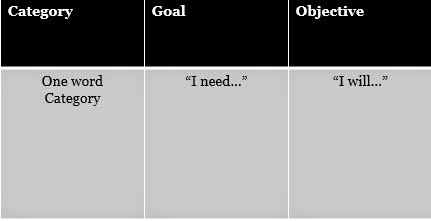As this year quickly draws to a close, I
want to take this opportunity to express my sincerest gratitude to those who
have worked tirelessly to help me heal from the wounds of PTSD. In my most popular post titled Paying It Forward . . . A Gift to Ourselves and Humanity (6/1/2014), I thanked many
people who were instrumental in my transformation from a broken spirit to a
more balanced existence.
 Several months have passed since that post
and I have become more attuned to the way that universal energy affects the
very fabric of our being. For the first
time in over 50 years of living on this planet, I can say that I am truly at
peace with respect to the mind, body, and spirit. A few weeks ago, I sent the staff at the
Natural Health Improvement Center of Alsip a letter of gratitude for the
amazing work that was done on my behalf inside the walls of what I termed, a
house of healing. As I say goodbye to
2014, I want to share these sentiments with you, my readers. Although what I wrote only scratches the
surface of how I feel, it will at least give you a snapshot into this unique
world of healing. Be well, enjoy, and I
will see you in 2015:
Several months have passed since that post
and I have become more attuned to the way that universal energy affects the
very fabric of our being. For the first
time in over 50 years of living on this planet, I can say that I am truly at
peace with respect to the mind, body, and spirit. A few weeks ago, I sent the staff at the
Natural Health Improvement Center of Alsip a letter of gratitude for the
amazing work that was done on my behalf inside the walls of what I termed, a
house of healing. As I say goodbye to
2014, I want to share these sentiments with you, my readers. Although what I wrote only scratches the
surface of how I feel, it will at least give you a snapshot into this unique
world of healing. Be well, enjoy, and I
will see you in 2015:
A
Year of Healing and Gratitude
Dear Dr. Stacy,
When I
first walked into the Natural Health Improvement Center my mind, body, and
spirit were almost broken by more than a decade and a half of battling with
PTSD. However, as the many months have
passed, I can truly say that I am well on my way to a more balanced life. Having said this, I would be remiss if I did
not thank the following people:
To
Dr. Stacy: Ross Perot once said “Eagles don’t flock, you have
to find them one at a time.” This I can say, that you have certainly gathered
for yourself some of the best and most compassionate people to work with you in
this healing house. Our journey towards
healing my body (organs) from the wounds of an overactive stress response has
only just begun, but I already feel the progress being made.
To
Danielle, Colleen, and Christina: Collectively you are
the front face and first point of entry into this practice. Your superior command of the products and
services offered has restored my faith in the art of good customer
service. Additionally, you take a vested
interest in the lives of each client by actively sharing in our successes along
the road to wellville. Human
interpersonal communication is one of the best methods of healing the soul.
To
Dr. Kat: Thank you so
much for keeping this “Humpty Dumpty” together in one piece while I took a walk
from the dark side of the moon, back into the light of personal wellbeing. I still have a way to go, but with your help
I can effectively balance the weight of this journey squarely on my shoulders.
To
Erin:
When I first inquired about acupuncture as a way to heal myself, Danielle
described you as being brilliant. This
is only one of many things you offer to your clients. I am truly blessed that our paths crossed at
what was a critical moment in my life (as you always say it’s the Universe
speaking to us). You are the best spiritual
healer/guide that I could have joined forces with. What I truly appreciate is that you describe
our relationship not as a practitioner-client, but rather as teacher-student.
That, my friend, is why I more firmly rooted to Mother Earth once again. I bow deeply in gratitude for the lessons you
have taught me.
I am sure
after the many conversations we have had, by now you know that Judy and I have
a strong spiritual connection to the Hawaiian Islands. When one has been accepted by the Hawaiian
people, you become Ohana (family). We
both consider each one of you Ohana, for all that you have done, and all that
you continue to do to build this House of Aloha. If there is anything I can do to help spread
or support your mission of healing, please do not hesitate to call.
As they say in Hawaiian: Aloha, Mahalo nui loa, and
during this time of year: Mele Kalikimaka.
Tim Grutzius




















